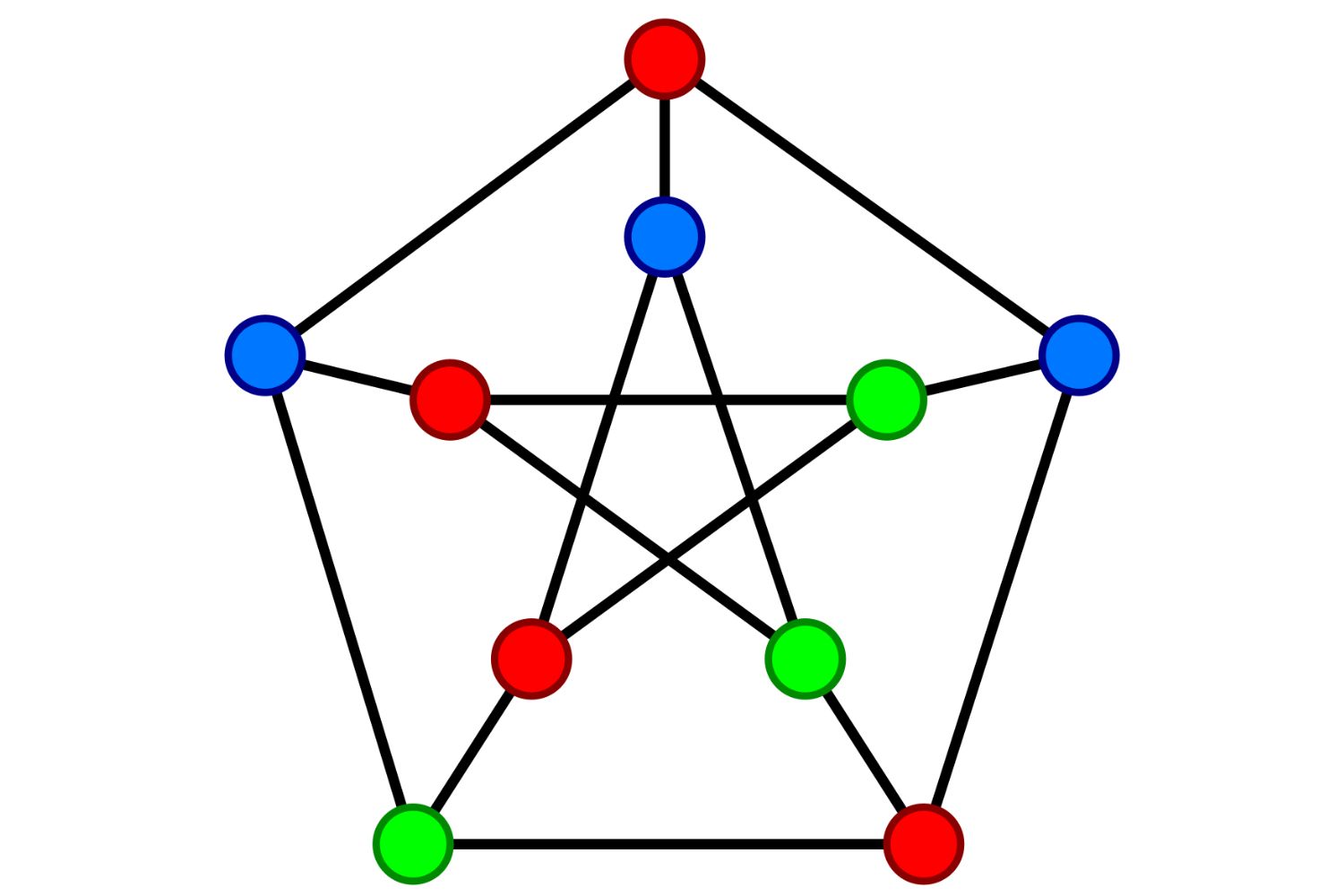
What is graph coloring? Graph coloring is a way to assign colors to the vertices of a graph so that no two adjacent vertices share the same color. This concept helps solve problems in scheduling, map coloring, and network design. Imagine trying to color a map where no two neighboring countries share the same color. That's graph coloring in action! It's a fascinating area of mathematics and computer science with practical applications. From optimizing timetables to designing circuits, graph coloring plays a crucial role. Ready to dive into some intriguing facts about graph coloring? Let's get started!
What is Graph Coloring?
Graph coloring is a fascinating area in mathematics and computer science. It involves assigning colors to elements of a graph subject to certain constraints. Let's dive into some intriguing facts about graph coloring.
-
Graph coloring is used to solve scheduling problems, like assigning time slots for exams.
-
The Four Color Theorem states that any map can be colored using just four colors, ensuring no two adjacent regions share the same color.
-
Graph coloring helps in frequency assignment for cell towers to avoid interference.
-
In computer science, graph coloring is used in register allocation during code compilation.
-
The chromatic number of a graph is the smallest number of colors needed to color the graph.
Types of Graph Coloring
There are various types of graph coloring, each with unique applications and rules. Here are some key types.
-
Vertex coloring assigns colors to vertices so that no two adjacent vertices share the same color.
-
Edge coloring assigns colors to edges so that no two edges sharing a common vertex have the same color.
-
Face coloring is used in planar graphs, where regions (faces) are colored instead of vertices or edges.
-
Total coloring combines vertex and edge coloring, ensuring no adjacent vertices or edges share the same color.
-
List coloring assigns a list of possible colors to each vertex, and the coloring must pick from these lists.
Applications of Graph Coloring
Graph coloring isn't just theoretical; it has practical applications in various fields. Here are some examples.
-
In sports scheduling, graph coloring helps ensure no team plays more than one game at a time.
-
It is used in Sudoku puzzles to ensure no two identical numbers appear in the same row, column, or subgrid.
-
Graph coloring aids in creating efficient timetables for schools and universities.
-
It helps in designing circuits by minimizing the number of layers needed for wiring.
-
In computer networks, graph coloring is used to optimize the use of bandwidth.
Challenges in Graph Coloring
Graph coloring can be quite challenging, especially for large and complex graphs. Here are some of the difficulties faced.
-
Finding the chromatic number of a graph is an NP-hard problem, meaning it is computationally intensive.
-
Some graphs, like bipartite graphs, are easier to color, while others, like complete graphs, are more challenging.
-
The problem becomes more complex with additional constraints, such as in list coloring.
-
Approximation algorithms are often used to find near-optimal solutions for large graphs.
-
Heuristics like the greedy algorithm can provide quick but not always optimal solutions.
Famous Problems in Graph Coloring
Several famous problems in graph coloring have intrigued mathematicians and computer scientists for years. Here are a few.
-
The Four Color Problem, solved in 1976, was one of the most famous problems in graph theory.
-
The Hadwiger Conjecture generalizes the Four Color Theorem and remains unsolved.
-
The Erdős–Faber–Lovász Conjecture, related to coloring hypergraphs, is another unsolved problem.
-
The Total Coloring Conjecture proposes that the total chromatic number is at most Δ+2 for any graph, where Δ is the maximum degree of the graph.
-
The Strong Perfect Graph Theorem characterizes perfect graphs using graph coloring.
Fun Facts about Graph Coloring
Graph coloring isn't all serious; there are some fun and quirky facts too. Let's take a look.
-
The concept of graph coloring dates back to the 1850s with Francis Guthrie's map coloring problem.
-
The term "chromatic number" comes from the Greek word "chroma," meaning color.
-
Graph coloring can be visualized using puzzles and games, making it a fun way to learn math.
-
Some video games use graph coloring algorithms to generate levels and puzzles.
-
Graph coloring has inspired artwork, where artists create visually appealing patterns based on coloring rules.
-
The study of graph coloring has led to the development of new mathematical fields and theories.
The Final Brushstroke
Graph coloring isn't just a math puzzle; it's a tool with real-world applications. From scheduling problems to network design, it helps solve complex issues efficiently. Understanding the basics can open doors to more advanced topics like chromatic numbers and planar graphs.
Remember, a graph's chromatic number tells you the minimum colors needed to color a graph without adjacent vertices sharing the same color. Planar graphs, which can be drawn on a plane without edges crossing, have a chromatic number of at most four.
Whether you're a student, a teacher, or just curious, graph coloring offers a fascinating glimpse into the world of mathematics. It’s a blend of logic, creativity, and problem-solving that can be both challenging and rewarding. So next time you see a map or a network, think about the colors and the math behind them. Happy coloring!
Was this page helpful?
Our commitment to delivering trustworthy and engaging content is at the heart of what we do. Each fact on our site is contributed by real users like you, bringing a wealth of diverse insights and information. To ensure the highest standards of accuracy and reliability, our dedicated editors meticulously review each submission. This process guarantees that the facts we share are not only fascinating but also credible. Trust in our commitment to quality and authenticity as you explore and learn with us.
